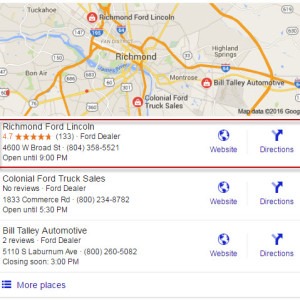— August 12, 2019

HR leaders have a tough job: They have to make and enforce rules that protect the organization, while simultaneously supporting employees as people. These responsibilities can often be in conflict, creating discomfort for both HR and employees. Despite the commitment and care of most HR professionals, the business press is full of articles like “HR Is Not Your Friend. Here’s Why” and the EEOC estimates that “75 percent of all workplace harassment incidents go unreported altogether.”
To learn what HR leaders and departments can do to combat this negative reputation, I spoke with Deb Muller, founder and CEO of HR Acuity, a technology platform specifically built for employee relations management. Based on HR Acuity’s recent benchmark study on best practices and trends in employee relations, Muller described three strategies that can help HR leaders enhance their department’s credibility with employees and senior executives alike.
Strengthen Your Processes So Employees Come Forward
Particularly in the #MeToo era, there’s a heightened expectation that once employees go to HR, perpetrators of bad behavior will be investigated and dispatched with appropriate penalties. But most organizations handle investigations in an ad hoc and unstructured way, eroding employee confidence. Part of the problem, according to Muller, is that “Organizations rely on their investigators doing the right thing, but there’s no process, so there’s no consistency.” That makes it hard to tell if investigations are being done correctly, and even more importantly, employees hesitate to come forward, because they don’t know how the process works and are unsure what will happen to them. By putting reliable processes in place, Muller notes, “the organization is signaling to its employees that we take this seriously, that we have a process [for investigations] just like we have … our sales processes, our marketing processes.”
As crucial as it is to manage employee’s expectations, it may be just as important to train company managers in the purpose and procedural steps of the company’s investigative processes. Unless employees use explicit language like “discrimination” or “hostile work environment,” most managers don’t even realize when they should be consulting with HR, according to Muller, rather than trying to handle things themselves. Managers may be biased because they know the players too well. But because they don’t know the process, they may not document appropriately and may undercut the organization’s ability to identify patterns of transgressive behavior.
Leverage Data To Improve The Organization
Muller stressed the value of aggregating data across the entire organization to ensure consistency in case handling and bring patterns to light. “We talk so much about data and how HR has to be more data-driven,” she says, “and yet behavioral data like this, whether it’s discrimination or bad behavior or bad performance, is something that organizations are not capturing.” She calls employee relations data “an amazing trove of insights” that can help companies answer questions like why one part of the organization has noticeably more problems, whether union issues are brewing and the like.
Muller described how HR can provide senior leaders with stories and insights to help prompt action. She said, “It’s those conversations that are going to elevate the strategic value of Human Resources. If HR and Employee Relations start collecting the data and sharing the stories and insight, [leaders are] going to be clamoring for the information.” When HR leaders provide comprehensive data to show how their company compares to its peers, or how various departments or leaders perform relative to each other regarding sensitive personnel issues, they’re adding real value.
Communicate About The Role Of HR
Employees will not trust in HR if they fear they’ll be treated unfairly. So, as Muller points out, “We have to find a way employees will start saying, ‘You know what? HR helped me. HR got to the bottom of this. I was treated with respect when I went there.’”
She suggests the idea of HR-sponsored brown bag lunches or town hall meetings where employees talk about their experiences. “Consider if you could get an employee to come forward and say, ‘I want to tell you about my experience. I may not share [all the] detail, but something happened, and I went to HR. Here’s how I was treated. Here’s how they communicated. It was handled in a way that I felt was timely, and I felt I was treated with dignity and respect and empathy for me going forward.’” That’s just one opportunity for HR to spread the word and highlight how they can help employees with difficult situations.
Muller believes that unless HR explicitly works to build trust, and senior leaders take action on the problems that HR raises, “We’re just allowing toxic behaviors to continue in the workplace, whether it’s harassment or discrimination or just bad bosses making people unsafe or uncomfortable.” As in any other aspect of business and organizational life, process creates consistency, data creates accountability and communication and outreach will help both employees and senior leaders manage their expectations. By applying these three disciplines, HR executives will be able to enhance their credibility and make a greater difference in their organizations.
Business & Finance Articles on Business 2 Community
(31)






